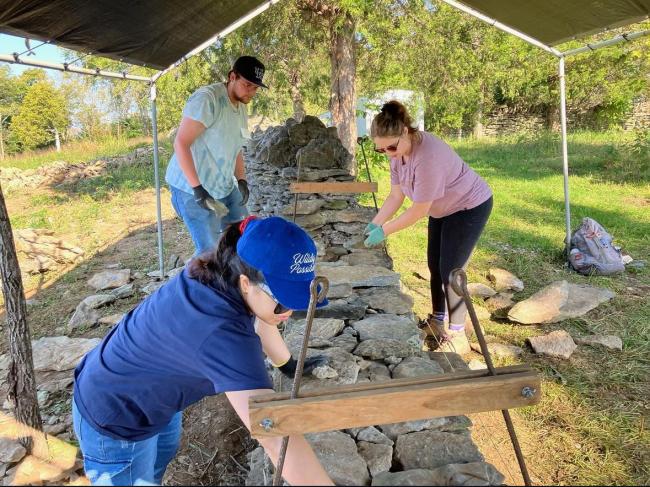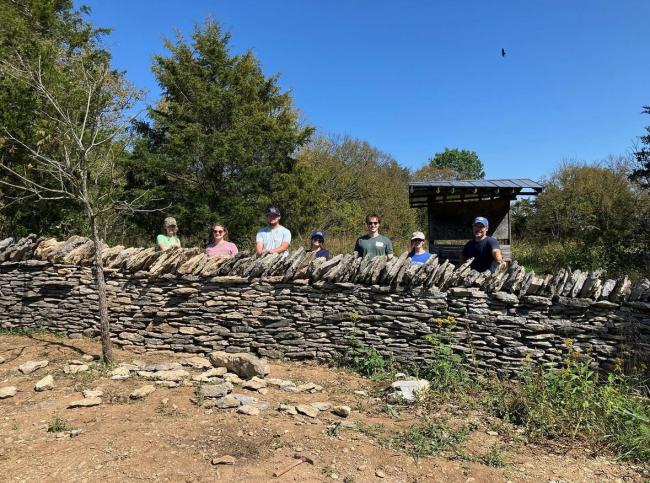Department of Historic Preservation hosts Dry Stone Masonry Workshop
The Department of Historic Preservation and the Dry Stone Conservancy cohosted a dry-stone masonry workshop at the Lower Howard's Creek Nature and Heritage Preserve in Clark County earlier this month.
The Executive Director of the Dry Stone Conservancy and 2015 master’s of historic preservation (MHP) alum Russell Waddell led the workshop. Participating students received an introduction to central Kentucky's history of dry-stone masonry and were given a basic understanding of how the design of the region's rock fences have changed over time.
According to the Dry Stone Conservancy website, “Rock fences are one of the most identifiable and well-known features of the world-famous Kentucky Bluegrass Region. They help distinguish our landscape for all who reside and visit here, yet they are disappearing at an alarming rate.”
After their introduction to the craft of dry-stone masonry, the students worked with Waddell, Department of Historic Preservation Chair Doug Appler and Department of Product Design Chair Jonathan Mills to dismantle a failing section of wall and rebuild it following basic principles of sound dry stone construction.
“As a future preservation professional, it is very likely they that will encounter a dry stone structure at some point on the job, especially in the State Historic Preservation Offices and cultural resource management side of things,” Waddell said. “We need these people to know what they're looking at, how it was built, and who to call when they encounter these structures. We can't expect people to know how to fix, document, or deal with a dry-stone structure if they've never been taught. That's why the Dry Stone Conservancy exists.”
In addition to the work of rebuilding the fence, Preserve Manager Karis Pumphrey gave students a tour of Lower Howard's Creek. During the tour, Pumphrey framed the preserve as a historic landscape, showing how Native Americans, colonial settlers and early commercial and industrial interests shaped the land into its current state. Students had the chance to see some of the structures remaining from those early industries, including a mill building, the mill race, stone bases of pole derricks and thousands of feet of dry-stone fences.
“Dry stone walls add such character to the rolling hills of the Bluegrass,” Emily Giurgevich, first year MHP student, said. “The workshop was an example of land and structure preservation that helped me expand my idea of preservation to be broader and to include sustainability as part of the practice too.”


